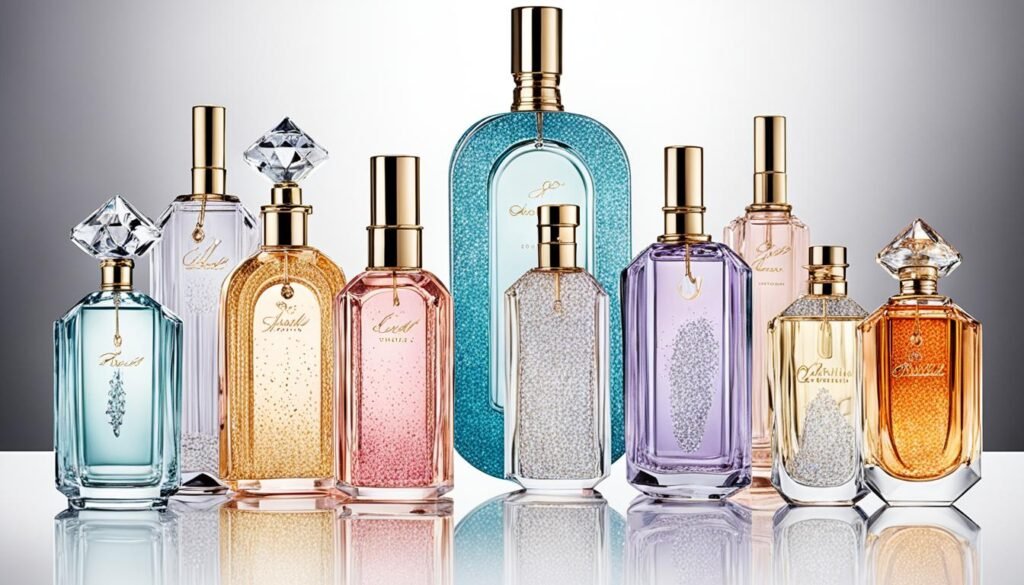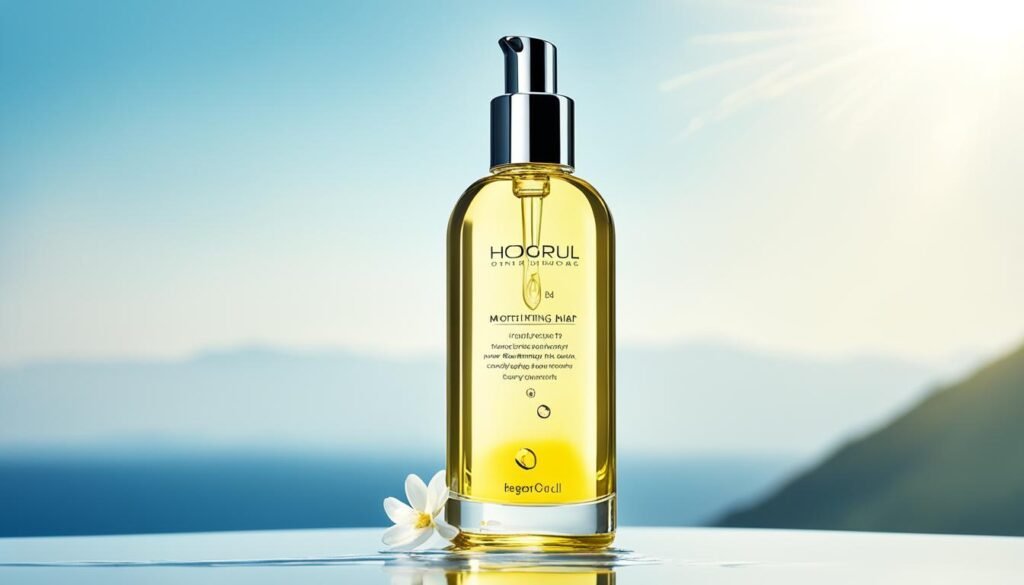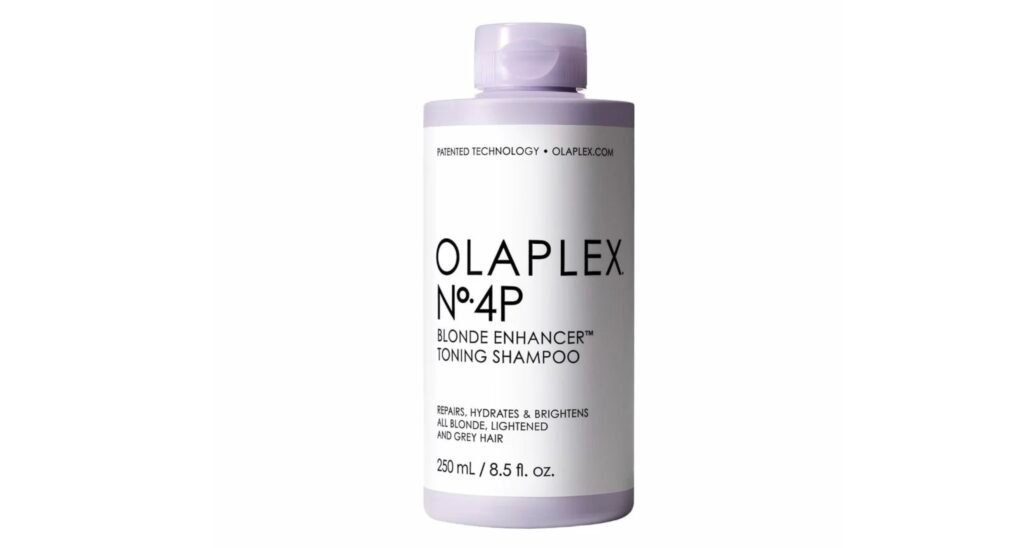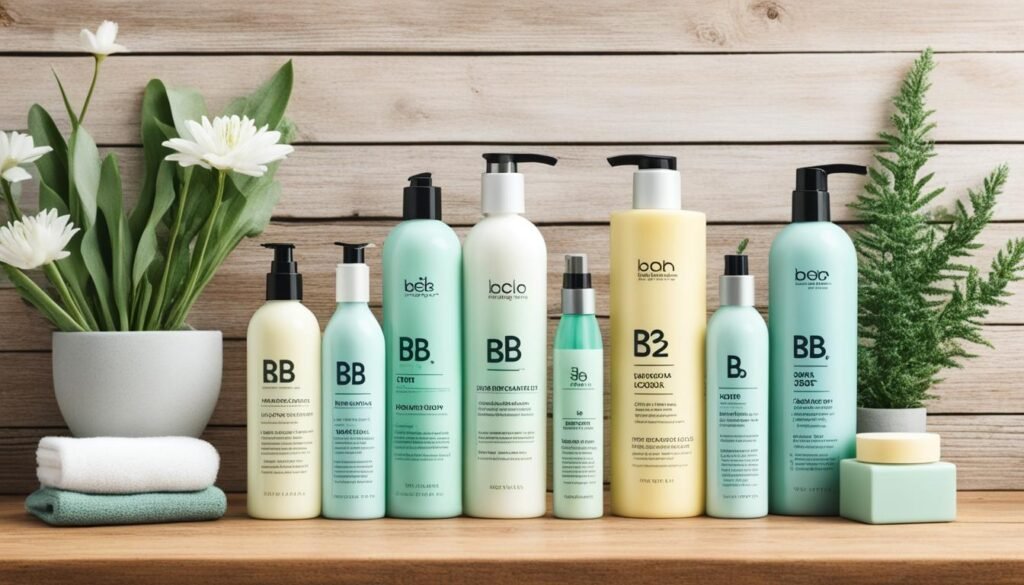Are you struggling with damaged hair that feels dry, brittle, and lifeless? Don’t worry; you’re not alone. Most people nowadays face the challenge of dealing with damaged hair due to various factors like bleaching, heat styling, and hair color treatments.
Table of contents
- Understanding Hair Breakage
- Preventive Measures for Hair Breakage
- Treating Hair Breakage
- Protein Treatments for Strengthening Hair
- Revitalizing Hair Care Routine
- best treatments for hair breakage
- Hydrating Hair Masks and Serums
- Vitamins and Supplements for Hair Health
- Anti-Breakage Hair Products
- Hairstyling Techniques for Damaged Hair
- Professional Treatments for Hair Breakage
- Source Links
But the best treatments for hair breakage can help you revive your locks and restore them to their former glory. This article will explore the most effective solutions for preventing hair damage, strengthening hair strands, and repairing split ends.
Have you ever wondered why some people seem to have hair breakage remedies that work like magic while others struggle to find the right solution for their damaged hair? The secret lies in understanding the underlying causes of hair breakage and adopting a targeted approach to protein treatments for hair, deep conditioning hair masks, and other nourishing hair care practices. Prepare to uncover the keys to unlocking your hair’s full potential!
Understanding Hair Breakage
Maintaining healthy, vibrant hair can be a constant challenge, especially when faced with the common culprits of hair breakage. To address this issue effectively, it’s essential to understand the primary causes of damaged hair and recognize the telltale signs of hair breakage.
Causes of Hair Breakage
One of the leading causes of hair breakage is the use of harsh chemical treatments, such as bleaching, coloring, and perming. These processes can strip away the natural oils and proteins that keep hair strong, leaving it dry, brittle, and prone to breakage. Excessive heat styling with tools like blow dryers, straighteners, and curling irons can also compromise the hair’s structural integrity, leading to over-processing and damaged hair.
Environmental factors, such as exposure to UV radiation, harsh weather conditions, and pollution, can also contribute to hair cuticle damage and increased susceptibility to breakage. Improper hair care habits, like vigorous brushing or rubbing the hair with a towel, can further exacerbate the problem.
Identifying Hair Breakage
The signs of hair breakage are often easily recognizable. Dry, brittle, dull-looking hair, increased split ends, and flyaways are all telltale indicators of damaged hair. Additionally, noticing more hair shedding during brushing or washing could be a sign of significant hair breakage.
Severely damaged hair may also exhibit a rough, coarse texture and a lack of elasticity, making it difficult to style and manage. Understanding these characteristics of damaged hair can help you take the necessary steps to address the issue and restore the health and resilience of your locks.
Preventive Measures for Hair Breakage
Repairing damaged hair requires a combination of nourishing hair care practices and targeted treatments. Choosing the right hair care products is crucial for restoring moisture and strengthening the strands. Look for shampoos, conditioners, and deep conditioning treatments specifically formulated for damaged hair, as they contain nourishing ingredients to help revive your locks.
Nourishing Hair Care Products
The right hair care products can make a significant difference in repairing and preventing hair breakage. Look for shampoos and conditioners specifically formulated to strengthen and protect damaged hair. These products often contain nourishing ingredients like proteins, ceramides, and amino acids to help rebuild the hair’s structure and enhance its resilience.
Avoiding Damaging Styling Habits
When dealing with damaged or fragile hair, you must be mindful of your hairstyling techniques and avoid further stress on the strands. Embracing protective hairstyles, such as braids, buns, and loose updos, can help minimize breakage and split ends by reducing tension on the hair. Additionally, exploring heatless styling options, like air-drying, overnight waves, and using foam or velcro rollers, can allow your hair to recover and regain its strength without the damaging effects of heat.
Protecting Hair from Environmental Factors
In addition to choosing the right hair care products and styling techniques, protecting your hair from environmental factors contributing to breakage is crucial. Exposure to the sun, wind, and pollution can all take a toll on the health of your hair. Consider using a UV-protective hair mist or serum when spending time outdoors, and be mindful of environmental stressors that may be causing additional damage to your strands.
By incorporating these preventive measures into your hair care routine, you can help minimize further damage and create an environment for your hair to thrive, setting the stage for a successful repair and restoration process.
Treating Hair Breakage
Addressing hair breakage requires a multi-pronged approach, and deep conditioning treatments are crucial to the process. These nourishing treatments penetrate deep into the hair shaft, providing intense hydration and reinforcing the hair’s structure. Look for deep conditioners that contain proteins and collagen peptides to strengthen your hair and protect it from future damage.
Deep Conditioning Treatments
Incorporating deep conditioning treatments into your hair care routine regularly can transform damaged, brittle hair. These specialized treatments work to restore hair elasticity and repair split ends, leaving your locks feeling soft, smooth, and healthier. Be sure to select deep conditioners formulated for repairing damaged hair, as they often contain targeted ingredients like keratin, argan oil, and ceramides to condition and nourish your strands deeply.
Trimming Split Ends
While deep conditioning is essential for reviving damaged hair, sometimes a little split-end trimming is necessary to maintain your locks’ overall health and appearance. Split ends can continue to travel up the hair shaft, leading to further breakage and damage. Regularly having your hair trimmed by a professional can effectively minimize split ends and keep your hair looking its best.
Limiting Heat Styling
One of the most common contributors to hair breakage is excessive heat styling. Frequent use of hot tools like blow dryers, curling irons, and straighteners can cause significant damage to the hair’s cuticle, leading to dryness, brittleness, and breakage. To reduce heat styling and repair damaged hair, try incorporating more heatless styling options, such as air-drying, overnight waves, and foam rollers.
Protein Treatments for Strengthening Hair
Protein treatments are an essential part of repairing damaged hair. They help to strengthen the hair structure by replenishing the proteins that have been depleted due to various factors. Ingredients like keratin, collagen, and silk proteins can penetrate the hair shaft and fill in the gaps caused by damage, improving the overall resilience and elasticity of the hair. Regular protein treatments in your hair care routine can significantly improve the condition of over-processed or severely damaged hair.
Keratin treatments, in particular, are known for restoring the hair’s natural structure and providing long-lasting protection against future damage. These treatments work by binding the keratin proteins to the hair, helping to smooth the cuticle and improve manageability. They can be especially beneficial for individuals with chemically treated or color-processed hair, as they can help to fortify and revitalize the strands.
In addition to keratin, collagen-based protein treatments can also be highly effective in repairing damaged hair. Collagen is a vital structural protein essential for hair’s health and strength. By infusing the hair with collagen, these treatments can help mend split ends, improve elasticity, and enhance the overall appearance of the hair.
Silk protein treatments may be an ideal solution for those seeking a more natural approach to protein-based hair care. Silk proteins are known for their ability to penetrate the hair shaft deeply, providing intense nourishment and strengthening the hair from within. These treatments can be a great option for individuals with sensitive scalps or those looking to minimize the use of synthetic ingredients.
Regardless of your specific protein treatment, incorporating them into your regular hair care routine can be a game-changer for repairing and strengthening damaged hair. By replenishing the essential proteins that have been depleted, you can help restore the hair’s structure, enhance its resilience, and achieve a healthier, more vibrant appearance.
Revitalizing Hair Care Routine
Tangles can lead to hair breakage, especially when your hair is wet. To minimize damage, switch to a wide-tooth comb when detangling your hair. The wider spaces between the teeth of the comb reduce friction and prevent unnecessary breakage. Rubbing your hair vigorously with a terry cloth towel can also cause friction and lead to breakage. Instead, opt for a gentler alternative, like a cotton t-shirt or a microfiber towel.
Gentle Brushing Techniques
Gentle hair brushing is essential for maintaining hair health and integrity. Avoid aggressively brushing or combing your hair, as this can lead to increased friction and potentially cause tangles and breakage. Instead, use a wide-tooth comb or a soft-bristle brush to gently detangle your hair, starting from the ends and working your way up towards the roots.
Silk or Satin Pillowcases
Switching to silk or satin pillowcases can also help reduce hair friction and minimize tangles while you sleep. These materials have a smoother surface than cotton, which can create less friction and cause less damage to hair strands.
best treatments for hair breakage
Many hair care products are tailored to repairing overprocessed or damaged hair, with ingredients like proteins, keratin, and collagen known for their nourishing and reparative properties. Protein-rich hair masks can help replenish the hair’s structure, fill in gaps caused by damage, and improve elasticity. Bond-building hair serums are also effective in restoring the hair’s internal bonds, strengthening strands, and preventing future breakage. Incorporating these targeted treatments into your hair care routine can significantly improve the condition of damaged hair.
Protein-Rich Hair Masks
Protein-rich hair masks are formulated with potent ingredients like keratin, collagen, and silk proteins that can penetrate the hair shaft and fortify the structure of damaged strands. These treatments replenish the depleted proteins, helping to fill in the gaps and restore the hair’s overall strength and elasticity.
Bond-Building Hair Serums
Bond-building hair serums are designed to repair the internal bonds within the hair, which can weaken due to chemical treatments, heat styling, and environmental stressors. These serums contain specialized molecules that work to restore the hair’s natural bonds, resulting in stronger, more resilient strands that are less prone to breakage.
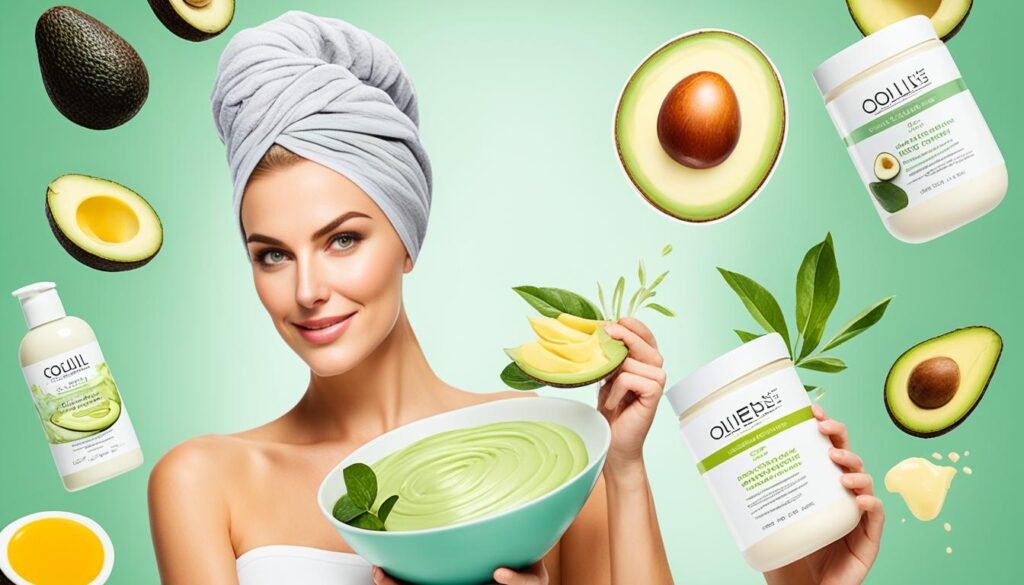
Hydrating Hair Masks and Serums
In addition to protein-based treatments, hydrating hair masks and serums can also be incredibly beneficial for repairing damaged hair. Ingredients like coconut oil and argan oil are known for their ability to deeply condition and moisturize the hair, helping to restore softness, shine, and manageability.
Coconut Oil Hair Treatments
Coconut oil hair treatments can penetrate the hair shaft, providing intense hydration and nourishment. This coconut oil can help to replenish the hair’s natural oils, leaving it feeling soft, smooth, and rejuvenated.
Argan Oil Hair Serums
Argan oil-infused hair serums can help smooth the cuticle and lock in moisture, protecting the hair from future damage. These hair serums are a great way to add a dose of hydration and shine to nourishing damaged hair, making it healthier and more manageable.
Incorporating these hydrating hair masks and hair serums into your routine can be transformative for dry, brittle, and over-processed hair, providing the deep conditioning and nourishment it needs to thrive.
Vitamins and Supplements for Hair Health
Maintaining a balanced diet rich in vitamins, minerals, and proteins is essential for overall hair health. Certain nutrients, like biotin and vitamin C, can be particularly beneficial for repairing damaged hair and promoting healthy hair growth.
Biotin for Hair Growth
Biotin, also known as vitamin B7, plays a crucial role in producing keratin, the primary structural protein in hair. Supplementing with biotin can help strengthen and fortify the hair, reducing breakage and supporting new growth.
Vitamin C for Collagen Production
Vitamin C, on the other hand, is essential for the production of collagen, which is crucial for hair’s health and elasticity. Incorporating these key vitamins and supplements into your regimen provides your hair with the internal support it needs to recover from damage and thrive.

Anti-Breakage Hair Products
The right hair care products can significantly improve hair repair and prevent breakage. Look for anti-breakage products, such as strengthening shampoos and conditioners, that are specifically formulated to strengthen and protect damaged hair. These products often contain nourishing ingredients like proteins, ceramides, and amino acids to help rebuild the hair’s structure and enhance its resilience.
Strengthening Shampoos and Conditioners
Strengthening shampoos and conditioners are designed to target the root causes of hair breakage, providing a comprehensive solution to revive and maintain healthy hair. These products typically contain a blend of targeted ingredients, including proteins, that help to fortify the hair’s internal structure, reducing the likelihood of future damage and breakage.
Leave-In Conditioners for Protection
In addition to strengthening shampoos and conditioners, leave-in conditioners can also be incredibly beneficial for preventing further hair damage and breakage. These leave-in treatments are formulated to provide ongoing nourishment and protection, sealing in moisture and shielding the hair from environmental stressors that can lead to split ends and breakage. Incorporating a leave-in conditioner into your hair care routine can help maintain the health and resilience of your hair, even in the face of daily styling and processing.
Hairstyling Techniques for Damaged Hair
When dealing with damaged or fragile hair, you must be mindful of your hairstyling techniques and avoid further stress on the strands. By embracing protective hairstyles and exploring heatless styling options, you can minimize breakage and split ends while allowing your hair to recover and regain its strength.
Protective Hairstyles
Protective hairstyles, such as braids, buns, and loose updos, can help minimize breakage and split ends by reducing tension on the hair. These styles gently hold the hair in place, minimizing friction and stress that can lead to damaged hair. Incorporating protective hairstyles for damaged hair into your routine can be a game-changer in your journey to revive and restore your locks.
Heatless Styling Options
Exploring heatless styling techniques can allow your hair to recover and regain its strength without the damaging effects of heat. Options like air-drying, overnight waves, and foam or velcro rollers can help you achieve your desired style while avoiding further damage and minimizing hair stress. Embracing these heat-free hair care methods can be a crucial step in your hair recovery process.
Professional Treatments for Hair Breakage
Professional treatments may be necessary for severe hair breakage or extensive damage to achieve optimal results. Salon services like bond-building treatments, intensive protein treatments, and specialized hair masks can provide a more targeted and potent approach to repairing damaged hair. These advanced solutions, often available only through licensed professionals, can help strengthen the hair’s internal structure, seal split ends, and restore the hair’s overall health and appearance.
Professional hair treatments, such as those offered in salons, can effectively address significant hair breakage and damage. Salon services like bond-building treatments work to repair the internal bonds within the hair. In contrast, intensive protein treatments replenish the essential amino acids that have been depleted, fortifying the hair’s structure. Specialized hair masks, formulated with advanced ingredients, can deeply nourish and revive severely compromised locks.
When dealing with hair that has suffered extensive damage, consulting with a trusted hair care specialist can be invaluable. These professionals can evaluate the condition of your hair and recommend the most suitable professional treatments to help you achieve your hair goals. By undergoing these advanced salon services, you can unlock the path to healthier, more resilient hair that is better equipped to withstand future damage and breakage.
FAQ
What are the common causes of hair breakage?
The major culprits of hair breakage include bleaching, heat styling, and hair color treatments, which can strip away moisture and leave the hair dry, brittle, and prone to breakage and split ends.
How can I repair damaged hair?
Repairing damaged hair requires a combination of hair care practices and targeted treatments. This includes using shampoos, conditioners, and deep conditioning treatments formulated for damaged hair, as well as incorporating protein treatments and hydrating hair masks and serums.
What is the importance of protein treatments for damaged hair?
Protein treatments are essential for repairing damaged hair as they help to strengthen the hair structure by replenishing the proteins that have been depleted. Ingredients like keratin, collagen, and silk proteins can penetrate the hair shaft and fill in the gaps caused by damage, improving the overall resilience and elasticity of the hair.
How can I prevent further hair breakage?
To prevent future hair breakage, it’s important to be mindful of your hairstyling techniques and avoid further stress on the strands. This includes embracing protective hairstyles, using heatless styling options, and incorporating anti-breakage hair products into your routine.
What vitamins and supplements can help with hair health?
Maintaining a balanced diet rich in vitamins, minerals, and proteins is essential for overall hair health. Biotin and vitamin C, in particular, can be beneficial for repairing damaged hair and promoting healthy hair growth.
When should I consider seeking professional treatment for my damaged hair?
For severe cases of hair breakage or extensive damage, professional treatments like bond-building treatments, intensive protein treatments, and specialized hair masks may be necessary to achieve optimal results. Consulting with a trusted hair care specialist can help you determine the best professional treatment plan for your unique hair needs and goals.
Source Links
- https://viccolabs.com/blogs/vicco-laboratories/reviving-your-locks-the-ultimate-guide-to-damaged-hair-treatment
- https://us.davines.com/blogs/news/how-to-fix-overprocessed-hair
- https://www.mdhair.co/article/10-ways-to-fix-your-hair-breakage
Disclaimer: The images, videos & logos displayed on bestfordaily.com are used for informational purposes only. We make every effort to credit the original copyright holder whenever possible. If you are the owner of any content used on this blog and do not wish for it to appear here, please contact us.
Author
-

Anne Williams is a passionate wordsmith, blending creativity with expertise in SEO to craft captivating content. With a penchant for concise yet compelling prose, she brings stories to life and leaves readers craving more. When she's not penning her next masterpiece, you can find her exploring new coffee shops or lost in the pages of a good book.
View all posts

